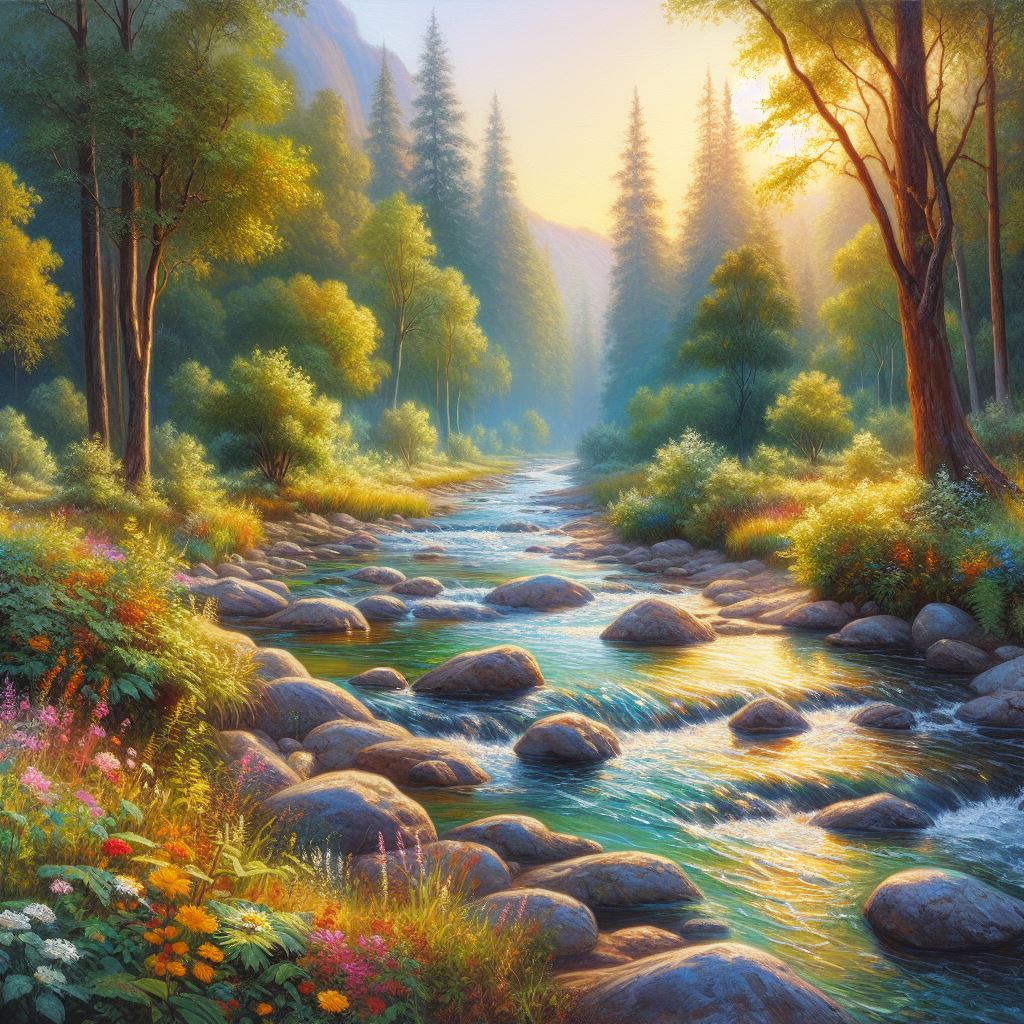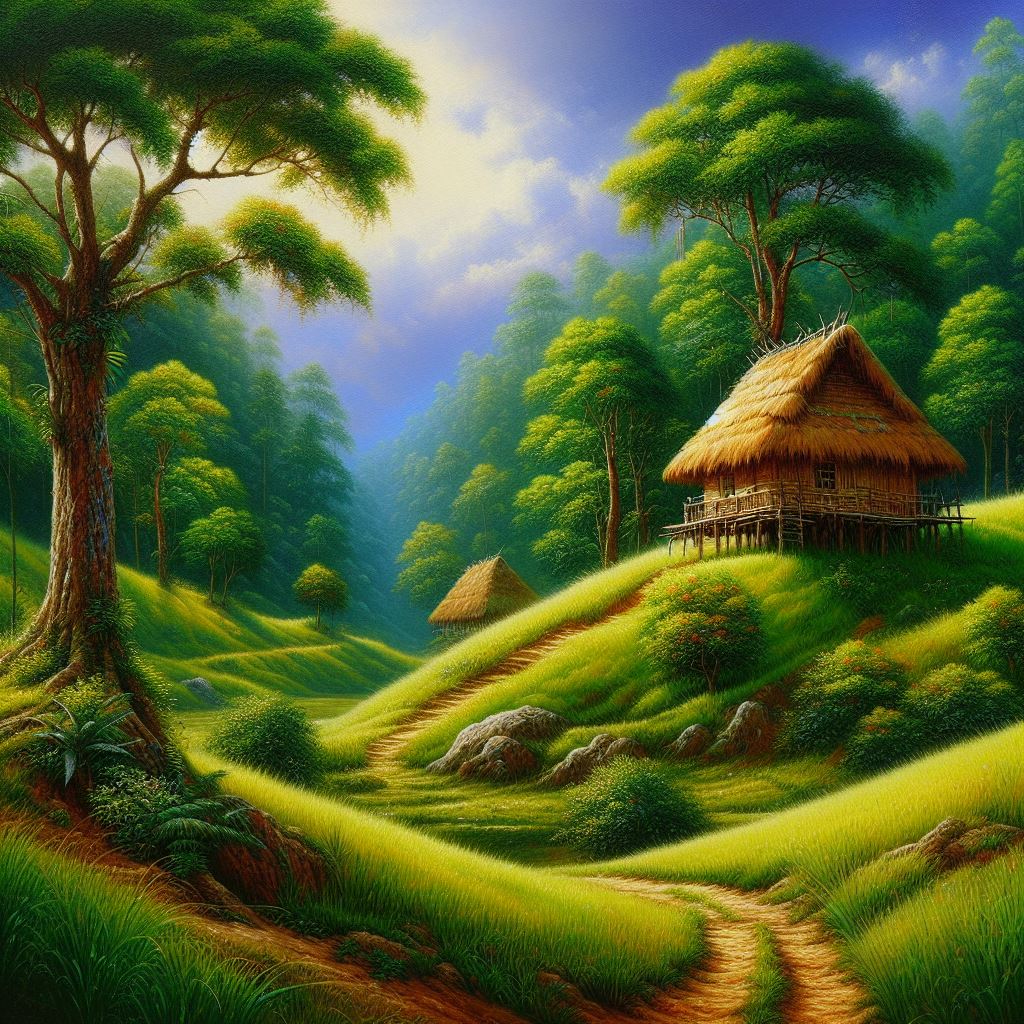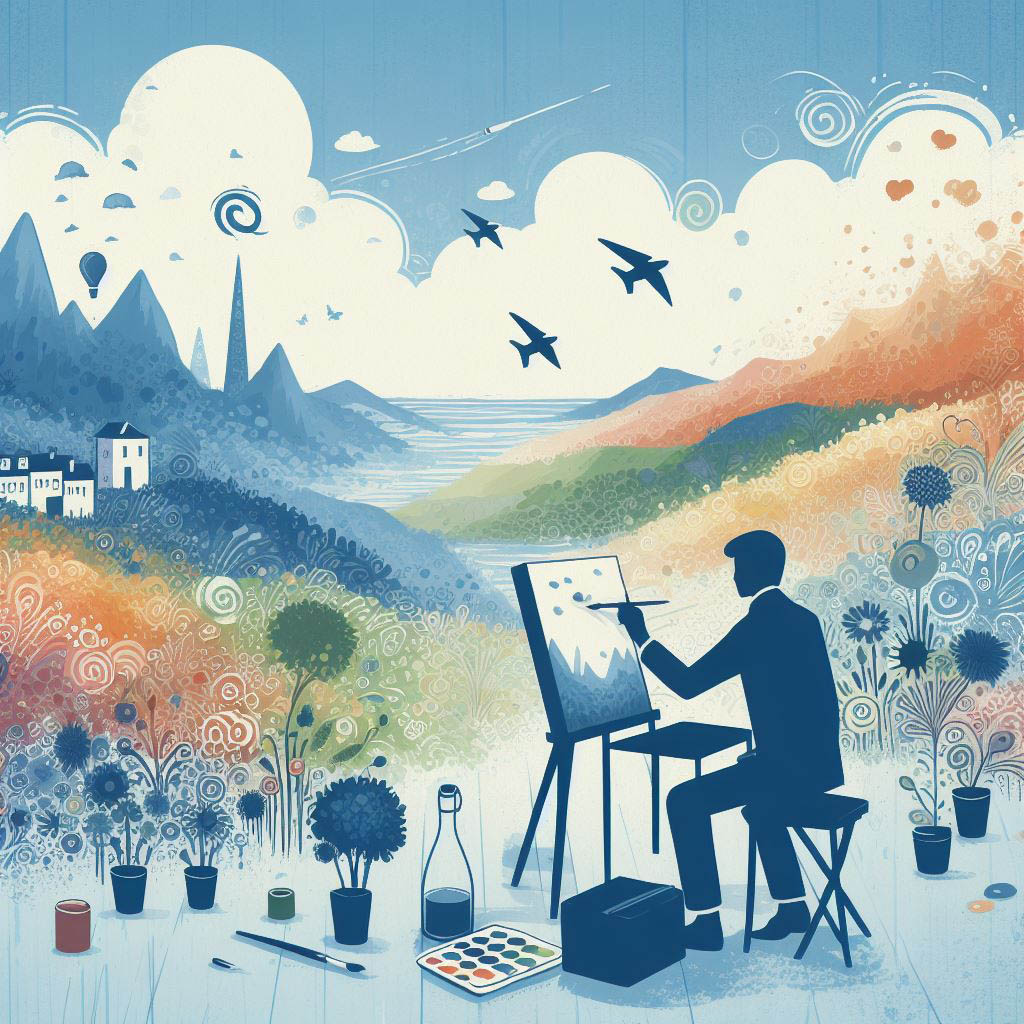The two-faced value of art – why AI will never beat humans
22 March 2024 · Written by Herman · No comments yet – be the first!
As an AI Engineer, I absolutely love how far Generative AI has come; how incredibly beautiful some artworks purely generated by AI can be. However, I will take a stance against AI in favour of the art community. Why? Because, as a visual artist too, I feel like people are overlapping two notions of art that really should be kept separate. Allow me to explain.
Contents
Two faces of art
Art is all about how it makes you feel. But what aspect of art does this – what makes you feel something? The way I see it, art is valued based on two faces: there is value in the visible aspect of art, but also in the invisible part of it. And this is where it gets tricky.
The visible

One face is all about what you see. What the imagery sparks inside of you. You may see a lovely serene painting of a creek in the woods, and you may feel a sense of wanderlust. You could almost imagine yourself being transported to this location. You start to hear birds chirping, you remember the smell of wet grass, you may start to feel the nature that is depicted. You might even feel more calm, almost forgetting about your deadlines up until now. As you can see on the right, this is what AI gets very much right: the visible aspect of this artwork made by AI is wonderful – let’s not let our angst of AI get in the way of appreciating how such imagery can make us feel. This art of pixels is still very much real and true.
The invisible
The other face of art – an arguably larger aspect of it – is the invisible part. This is the part that some of us tend to forget when we talk about art and AI. It is that, which fully answers the question: “how did this artwork come to be?”.
I have a painting in my house that a family member once purchased in the Philippines and brought all the way here to the Netherlands. It is a painting made by hand of a forest with a cottage on a hill, with grass vividly green and the sky brightly blue. The visuals are pretty good, albeit less detailed than what AI could generate with pixels instead of brush strokes. However, it has a long history. It is not a digital set of pixels. It is not losslessly copyable. It was not created at the same time this article was being written. Instead, decades ago, someone in the Philippines crafted it using the paint supplies they had on hand. They likely crafted the painting to provide for their family. My family member saw the painting on vacation and experienced a Decisive Moment: as he was looking at this painting, something inside him ‘clicked’ and he decided he wanted to own this piece of art. It is one of a kind.
AI misses the mark

There is so much more to a custom work of art than what is visible. Even for digital art – a set of pixels – when created by a person. There is always the simple fact that human-generated content takes incredible effort and relies on a process that most likely takes longer than if AI were to do this. It will thus have more of a (hi)story being created. When AI creates art, we are missing a process, missing the effort. And we tend to value the human brain’s creativity higher than that of an artificial neural network anyway. After all, we are all flawed with cognitive biases, among which the affinity bias. We humans feel more inclined to appreciate the efforts of a creation process of a biological being.
At one point, I recall, I considered starting a business creating and selling art made by AI. I was so focused on the visible aspect of art, that I completely forgot that the invisible aspect is actually the hardest part[1]. Sure enough, one could create a business selling wall art for less than if a photographer had to go out, take photographs and print those. But people like to hang art on their wall that speaks to them. The simple knowledge that an AI created your piece of art might be enough to put you off – you may start to see more and more flaws in this artwork. When a human creates (even digital) art, any flaw in the artwork we may see, we can at least consider it to be a conscious decision by the artist. There was a conscious moment that this artist placed an odd stroke in that specific colour on that specific location. And this simple thought is what we value more than an electrical current running through a graphics card, outputting pixels that map to an odd stroke of a virtual brush. In this sense, an AI will never win against a human. Because the human will always favour the effort of another human[2].
[1] In my mind, the solution to the “missing process” problem was to create a painter-machine that doesn’t generate pixels but generates instructions for actual paint brush strokes on a canvas. In hindsight, such complex machine would solve only half of the problem; we still wouldn’t consider it a conscious work of art.
[2] The occasional AI enthusiast might disagree.
What does ChatGPT think?
ChatGPT on the article’s title alone:
“What sets human-created art apart is the depth of human experience infused into every stroke, word, or note. It’s the pain, joy, love, and longing that an artist pours into their creation – experiences that AI, devoid of consciousness and subjective understanding, cannot replicate.”
